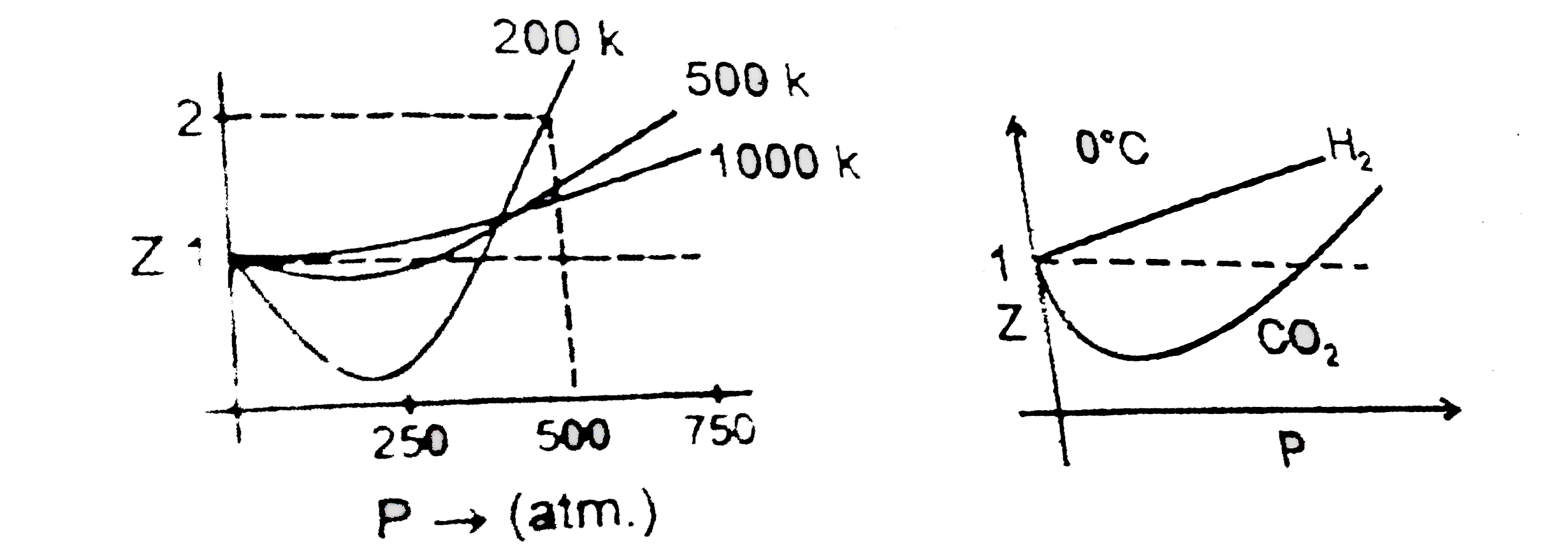Solution in Telugu
The correct Answer is:A-QR; B-QS; C-P ; D-P
Low attractive force dominate
high repulsive force dominate
high idal gas .
very low
Topper's Solved these Questions
- BOOK - AAKASH SERIESCHAPTER - STATES OF MATTEREXERCISE - PRACTICE SHEET (EXERCISE -IV) (LEVEL -II ADVANCED)(INTEGER TYPE QUESTIONS)4videos
STATES OF MATTER
- BOOK - AAKASH SERIESCHAPTER - STATES OF MATTEREXERCISE - PRACTICE SHEET (EXERCISE -V) (LEVEL -I MAIN)(STRAIGHT OBJECTIVE TYPE QUESTIONS)15videos
STATES OF MATTER
- BOOK - AAKASH SERIESCHAPTER - STATES OF MATTEREXERCISE - PRACTICE SHEET (EXERCISE -IV) (LEVEL -II ADVANCED)(STRAIGTH OBJECTIVE TYPE QUESTIONS)5videos
STATES OF MATTER
- BOOK - AAKASH SERIESCHAPTER - SATURATED HYDROCARBONSEXERCISE - QUESTIONS FOR DESCRIPTIVE ANSWERS10videos
SATURATED HYDROCARBONS
- BOOK - AAKASH SERIESCHAPTER - STOICHIOMETRYEXERCISE - QUESTIONS FOR DESCRIPTIVE ANSWERS59videos
STOICHIOMETRY
Similar Questions
Among the following gases, for how many gases, the compressibility factor is greater than unity at any pressure. H2,He,SO2,CO2,CH4,N2,C2H6O2
03:06View SolutionIn between which of the following molecules London force exist
a) CO2,CO2 b) HCI,HCI c) HCI,C6H604:29View SolutionFor helium vander Waals parameter bis 0.024 lit/mol. The diameter of helium is nearly
04:44View SolutionWhy boiling and melting points of hydrocarbons are low ?
View SolutionDistinguish between element and compound?
View SolutionThe effect of pressure on adsorption is high if
a. Temperature is low
b. Temperature is high
Temperature is neither very low nor very high
d. Charcoal piece is taken in place of charcoal powder03:06View SolutionColoumn-IColumn-II(a)At low pressure(p)Z=1+pbRT(b)At high pressure(q)Z=1−aVmRT(c)At low density of gas(r)Gas is more compressible then ideal gas(d)forH2andHeat0∘C(s)Gas is less compressible than ideal gas
02:33View SolutionColumn-IColumn-II(P)If volume of gas molecules be negligible(1)(P+aV2)(V−b)=RT(Q)At very high pressure(2)PV=RT+Pb(R)At low pressure and high temperature(3)PV=RT−aV(S)van der Waal's gas(4)PV=RT
03:00View SolutionConsider gas to be characterised by Vander Waal's equation.
Column - IColumn - II(A)Z=1(P)H2 gas at room temperature and moderate pressure(B)Z>1(Q)Any gas at very low pressure and high temperature.(C)Z<1(R)Any gas showing more compressibility than expectedd from ideal behaviour(D)Z=38(S)Gas at critical point(T)Gas at Boyle's temperature and at different pressures.03:06View SolutionSketch shows the plot of Z v/s P for a hypothetical gas for one mole at three distint temperature.

Boyle's temperature is the temperature at which gas shows ideal behaviour over a pressure range in the low pressure region.Boyle's temperature (Tb)=aRb.If a plot is obtained at temperature well below Boyle's temperature then the curve will show negative deviation, in low pressure region and positive deviation in the high pressure region. Near critical temperature the curve is more likely as CO2 and the temperature well above critical temperature curve is more like H2 at 0∘C as shown above.At high pressure suppose all the constant temperature curve varies linearly with pressure according to the following equation : Z=1+PbRT (R=2calmol−1K−1)
In very high pressure region if Z v/s P is plotted at 1200 K for the above gas then it will have greatest slope.View SolutionAssertion : At high pressure, the compression factor Z is (1+(Pb)/(RT)) Reason : At high pressure vander Waals' equation is modified as P(V-b) = RT .
04:28View SolutionWhich is correct in case of extent of physisorption High temperature low pressure low temperature high pressure low temperature low pressure All
03:34View SolutionA : At high pressure , the compressibility factor Z is (1 + (pb)/(RT)) . R : At high pressure van der Wall's equation is modified as p(V - b) = RT .
01:00View SolutionAssertion (A) : At high pressure , for one mole of a real gas , the compression factor Z is (1+PbRT)
Reason (R) : At high pressure , for one mole of a real gas , vanderwall equation is modified as P(V-b) = RT02:22View SolutionMatch column-I with column-II : {:((A)" Real gas at high pressure",(p)PV=RT+Pb),((B)" Force of attraction among gas Molecules is negligible",(q)PV=nRT),((C)" At high temp. and low pressure",(r)Z=1),((D)" Real gas at NTP",(s) (P+(an^(2))/(V^(2)))(V-nb)=nRT):}
03:16View Solution

